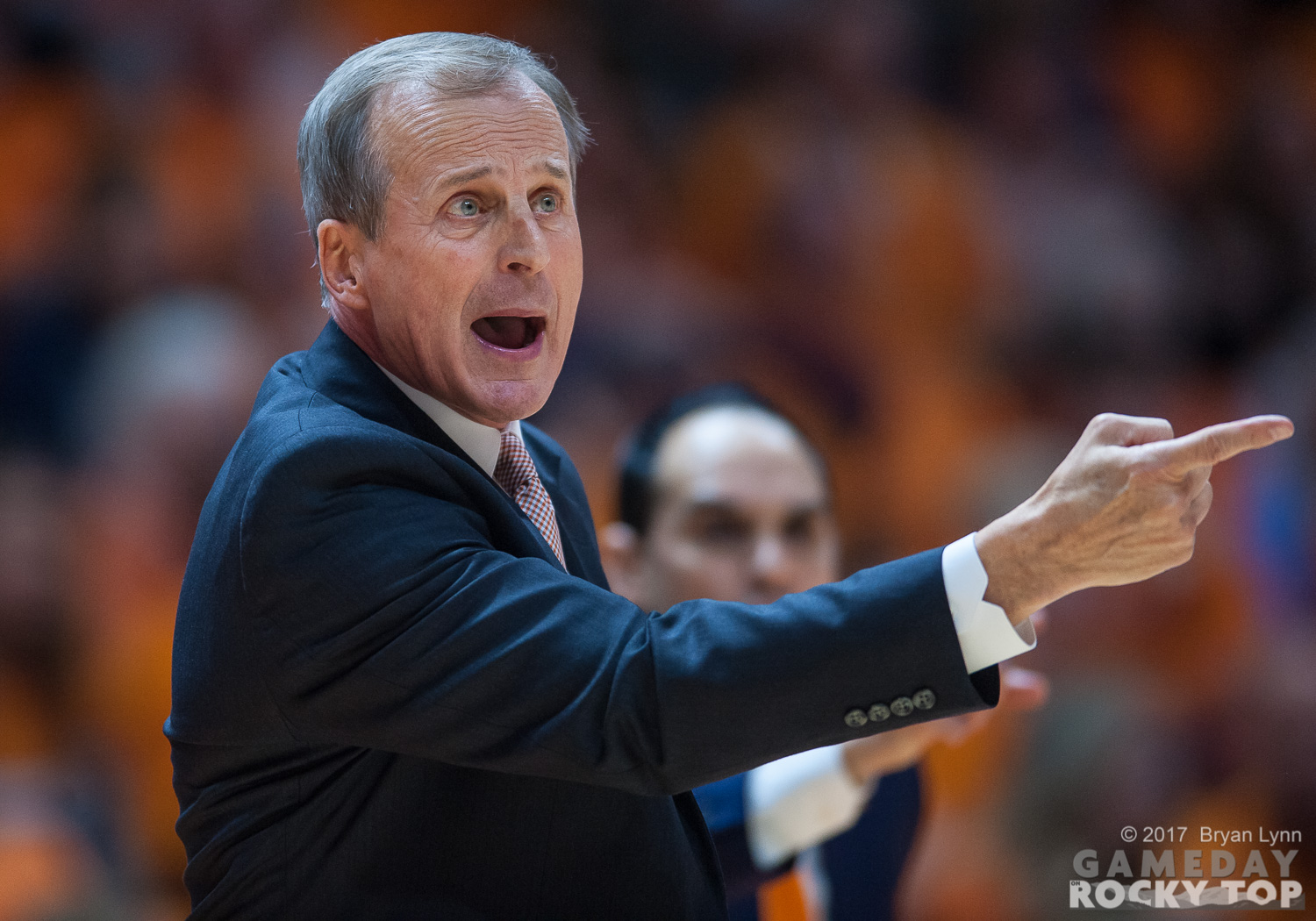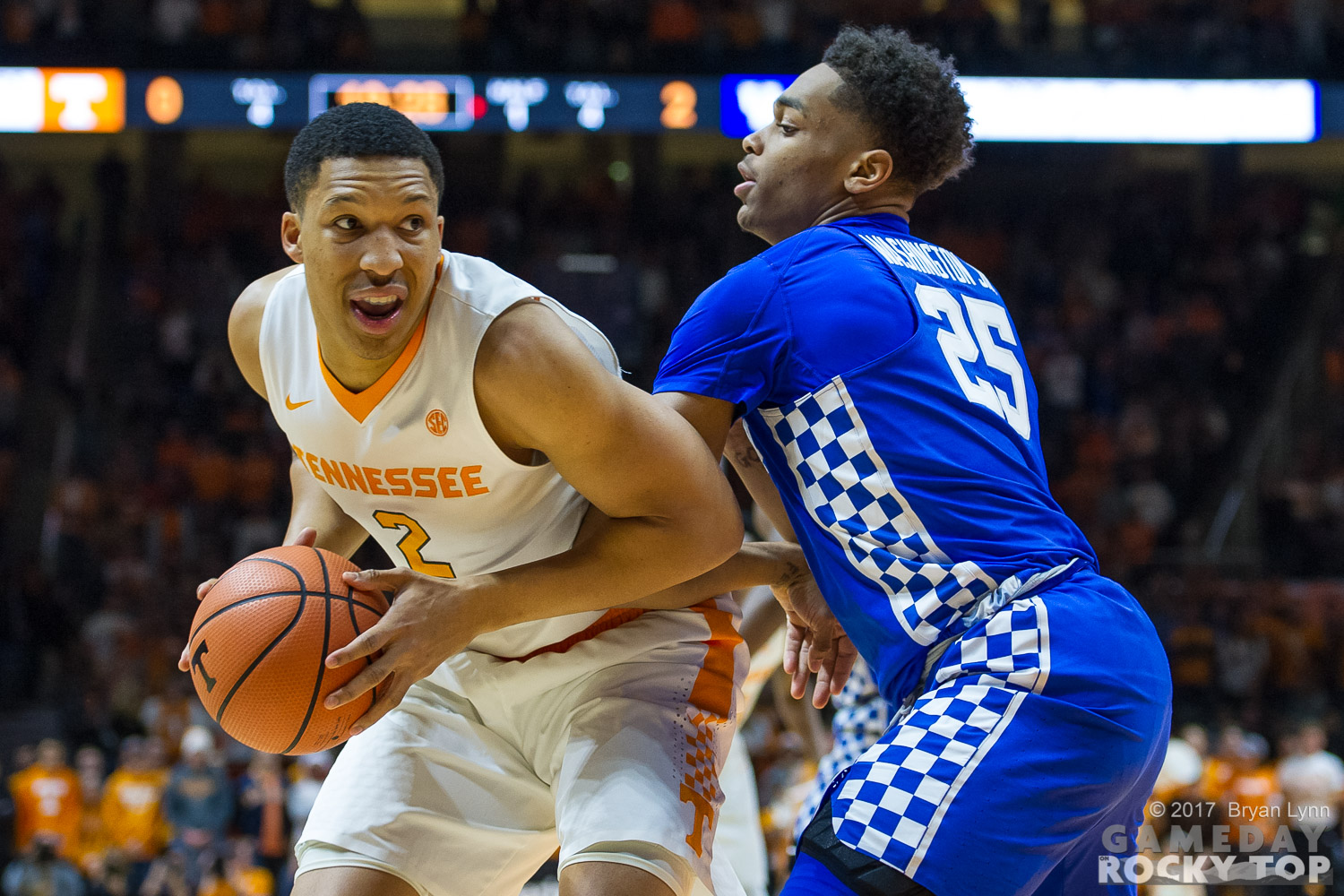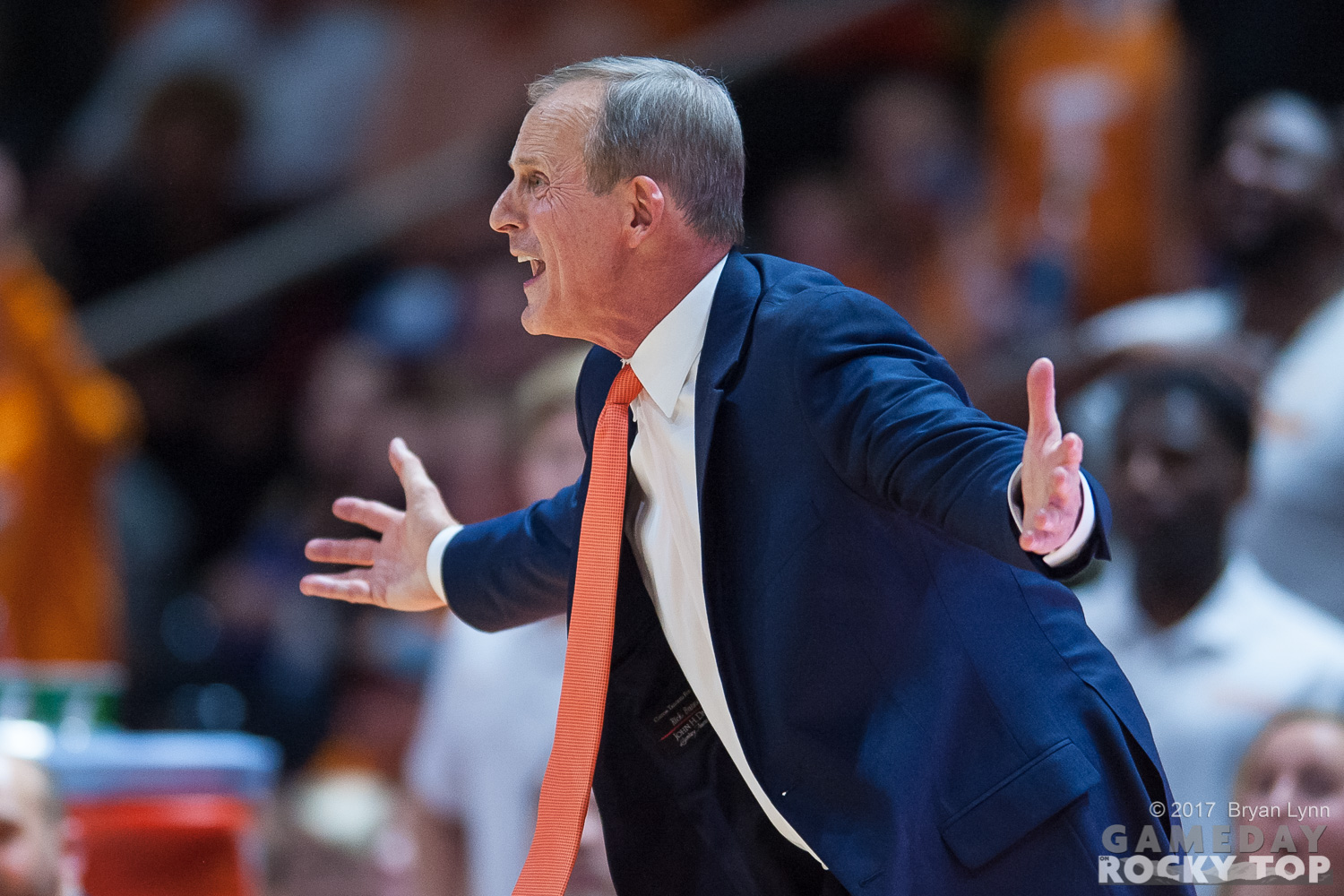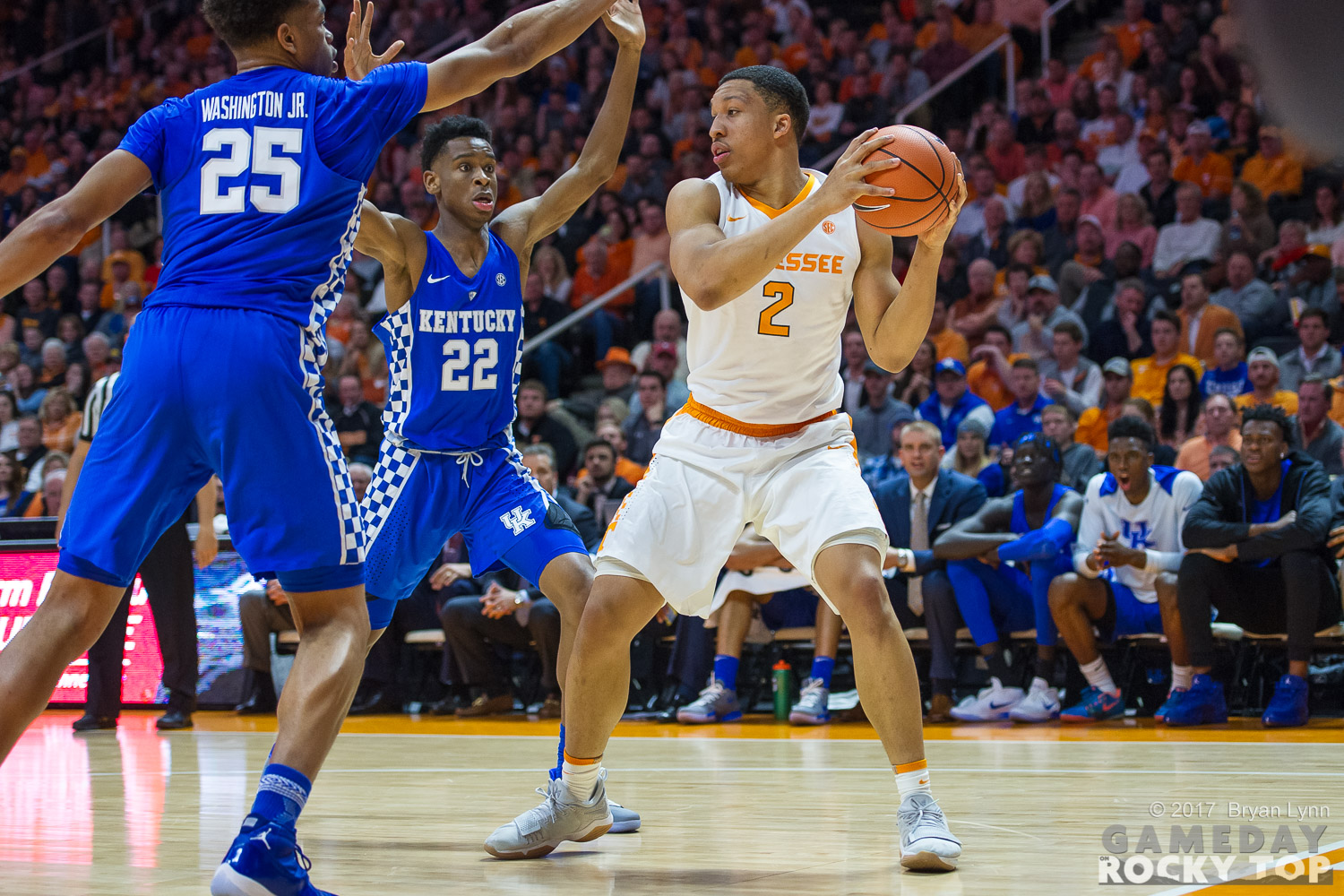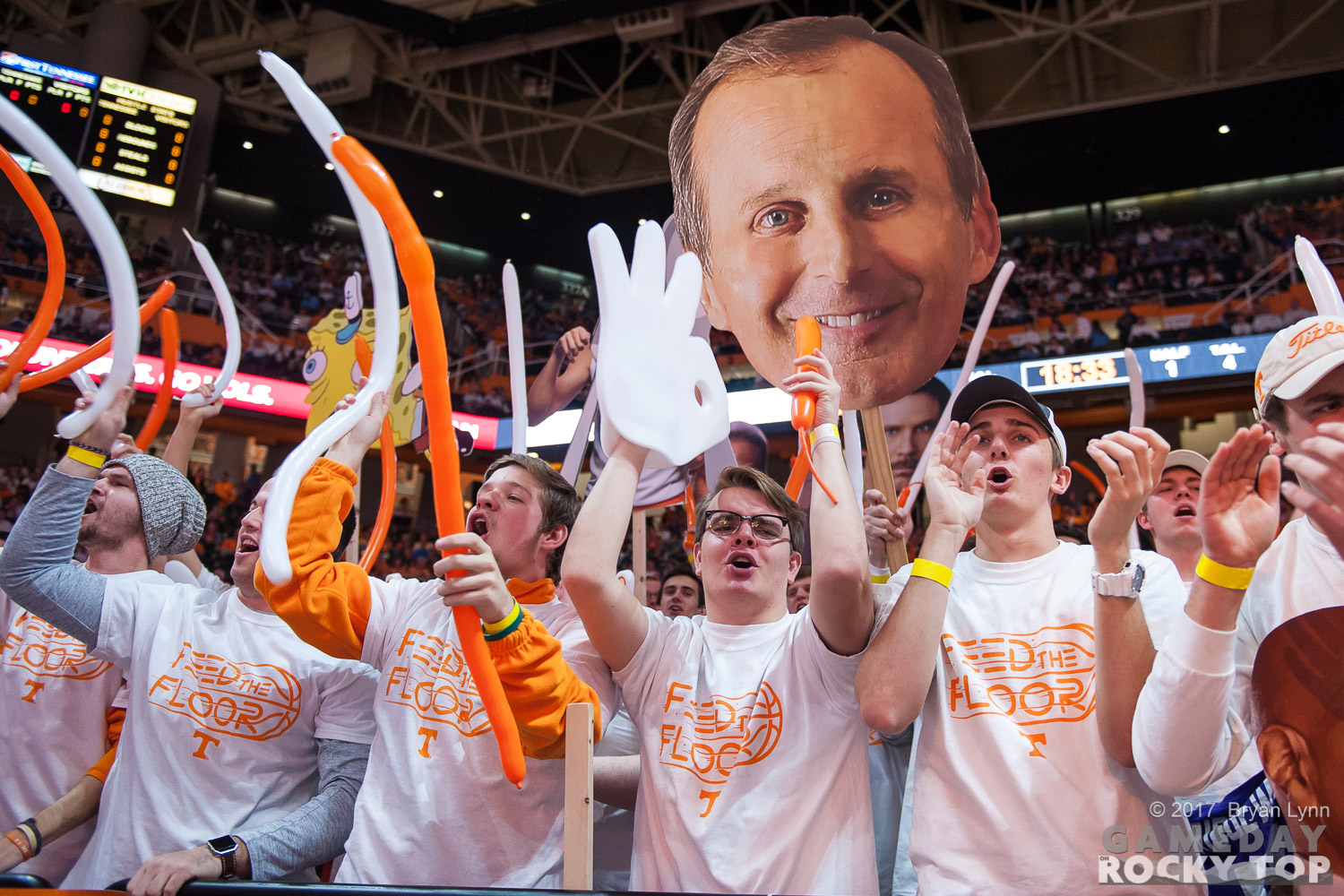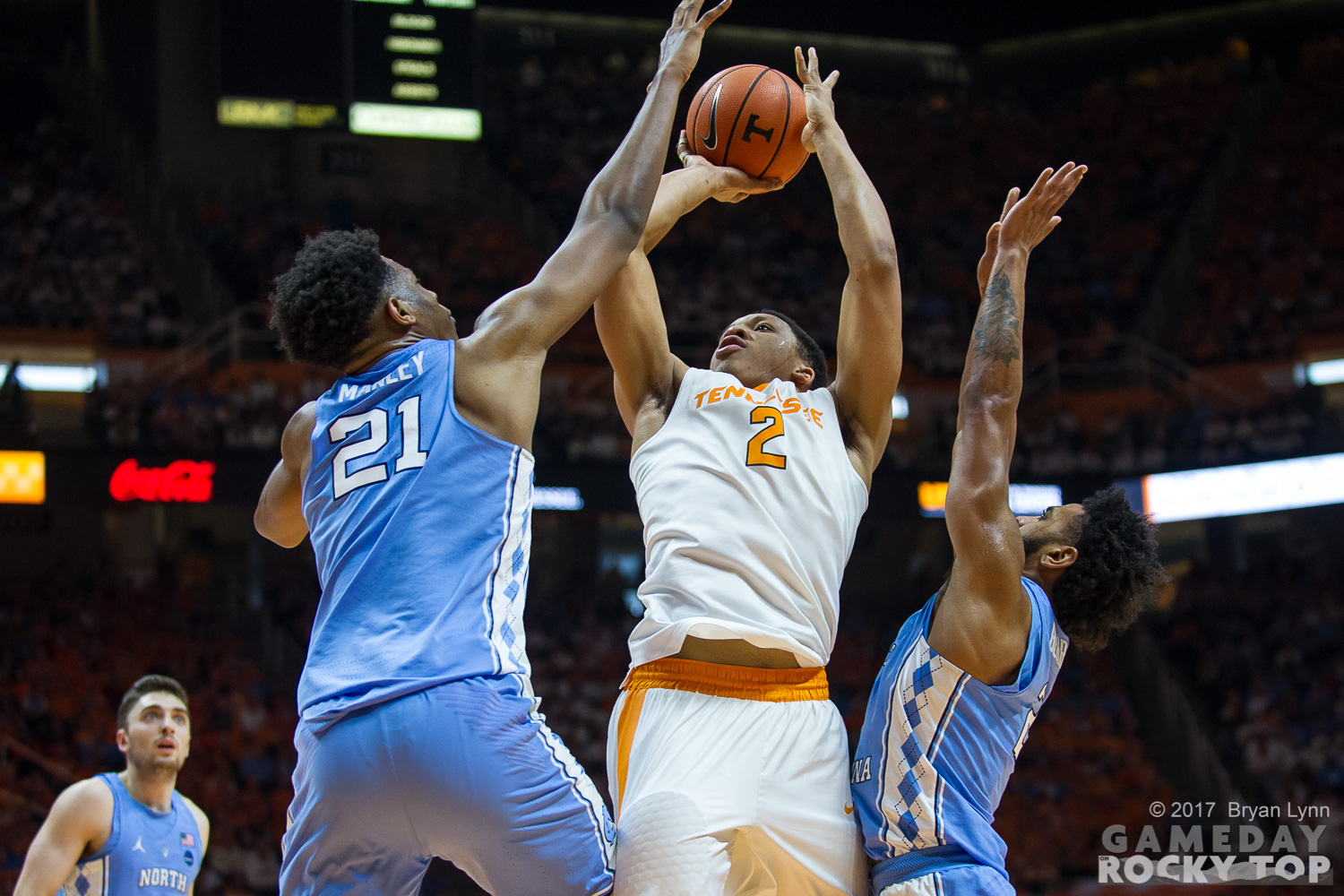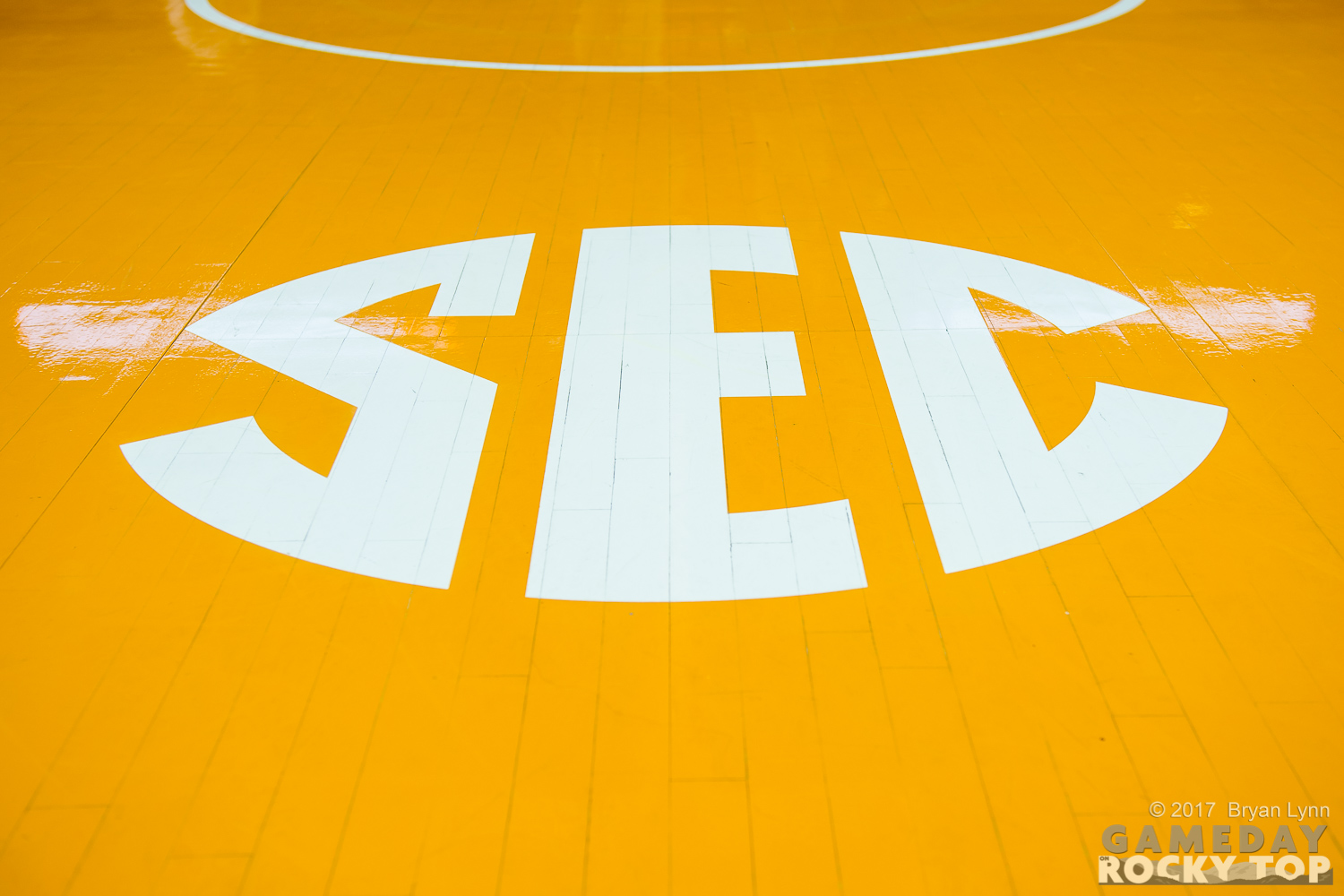Somewhere in dreams, Bruce Pearl still wears an orange blazer and the Vols never missed an NCAA Tournament. Perhaps a little further west in dreams, Rick Barnes still wears that other shade of orange and his teams kept finding their way into the tournament’s second weekend.
The nearly-impossible task put before whoever would follow Pearl was to keep the dream alive. Tennessee made 13 NCAA Tournaments in the bracket’s first 67 years, then six in a row under Pearl. The Vols went to a single Sweet 16 in the 64-team field from 1985-2005, then went to three under Pearl. They won the SEC outright, made the program’s first Elite Eight, and even spent a week at number one. It was a good dream.
It didn’t turn out to be Cuonzo Martin’s dream; his tenure remains a Rorschach test for Tennessee fans. So was his second year at Cal, two seasons ago, when he took the Golden Bears to their highest seed in tournament history, then lost in the first round to 13-seed Hawaii while down two starters and an assistant coach. We tend to see what we want to see.
One of the most helpful lenses in judging a college basketball team is Ken Pomeroy’s ratings. Unsurprisingly, they rate Bruce Pearl’s 2008 squad as the best of his tenure. What is surprising: not only was Cuonzo Martin’s last Tennessee team rated higher than all of Pearl’s, but Barnes’ team this year is giving them a run for their money:
- 2008: +22.17 adjusted efficiency, 13th nationally
- 2014: +23.69, 10th
- 2018: +21.77, 13th
The process was complicated, but the end result in 2014 finished closer to the mountaintop than any Tennessee team other than Pearl’s run to the Elite Eight in 2010. We’re a long way from the end result right now, but this Tennessee team has a higher KenPom rating than all of Pearl’s except 2008. Missing both the NCAA’s and the NIT the last three years trained us to not get ahead of ourselves, to keep doing the math on how many wins the Vols need just to get in the bracket. But KenPom’s math suggests this is far more than a bubble team.
And this year’s process runs through Cuonzo and CoMo tonight.
Dreams, by definition, end. Bruce Pearl was the architect of his own demise in Knoxville. Rick Barnes made five Sweet 16’s, three Elite Eight’s, and a Final Four from 2002-08. He sent 17 Longhorns to the NBA Draft in his 15-year stint in Austin, including five one-and-dones. But Texas never made it past the second round in Barnes’ last seven seasons.
I don’t know what Cuonzo’s dream is; I’m not sure he would speak in those terms anyway. But, when you listen to him talk about why he’s at Missouri in this outstanding piece from S.L. Price at Sports Illustrated, he might not be far from it.
This is the good news at the tail end of a decade of highs, lows, and complex emotions for Tennessee basketball and its coaches. Bruce Pearl didn’t find the same magic at Auburn in year one, but in year four his Tigers are 16-1 and headed for their first NCAA Tournament in 15 years. Cuonzo Martin took over a Missouri program that was 27-68 (8-46) under Kim Anderson, signed the nation’s best player only to lose him to injury two minutes into the season, and is still 12-5 (2-2). And Rick Barnes has stayed away from one-and-dones in Knoxville, but is putting together a season on pace to rival his predecessors’ best work.
Dreams are great. But reality, for all three men, is pretty great right now too.
